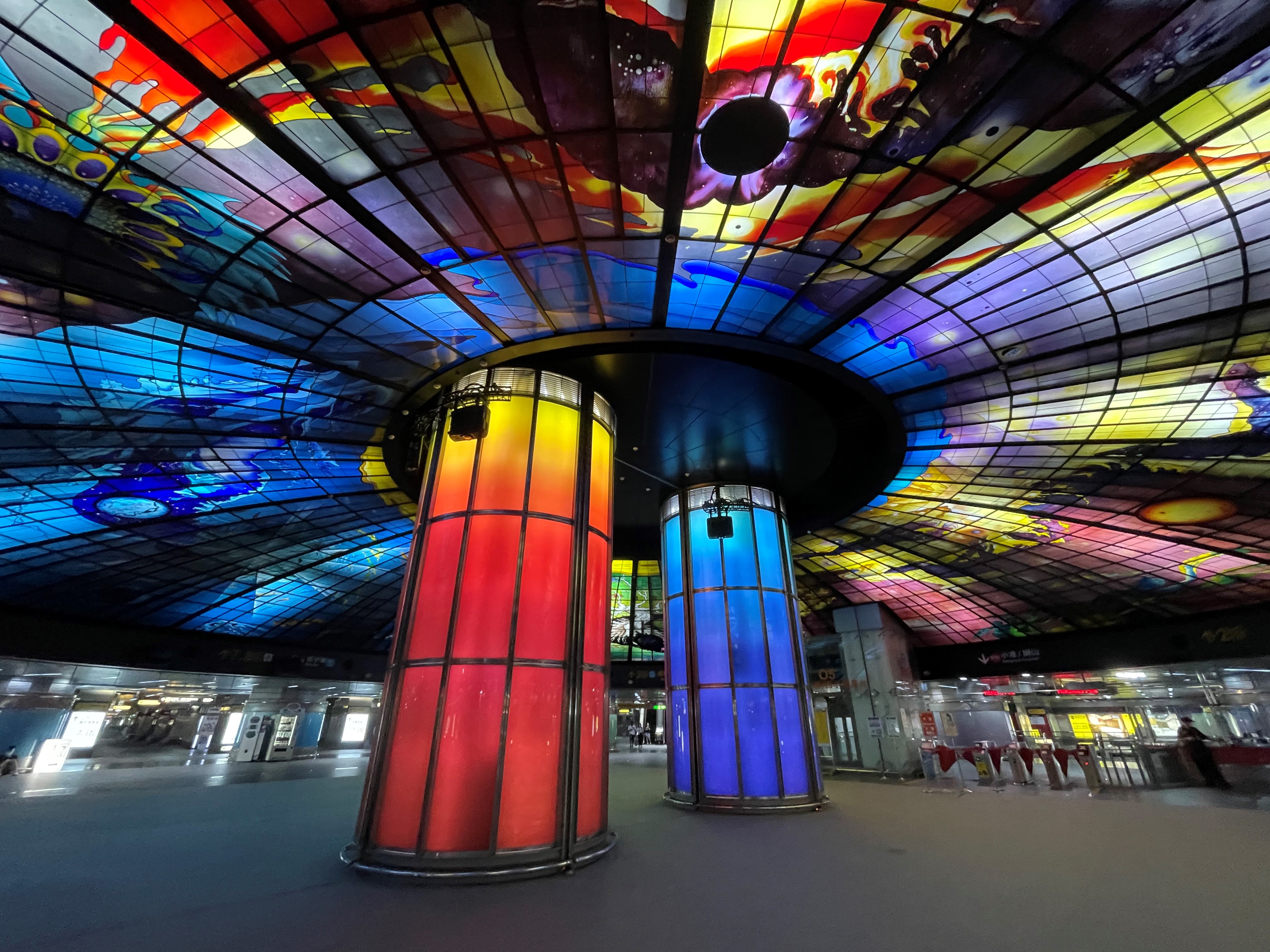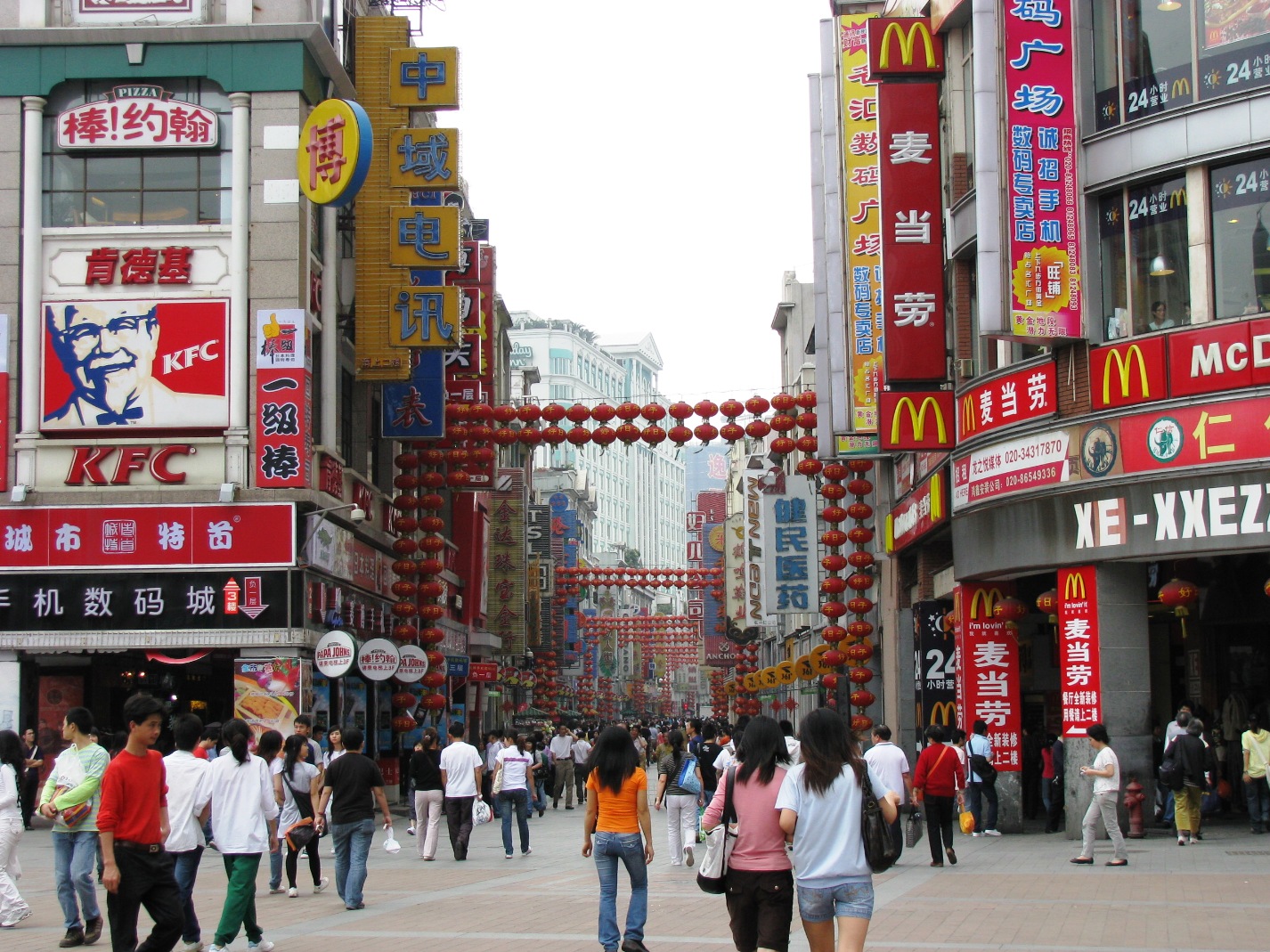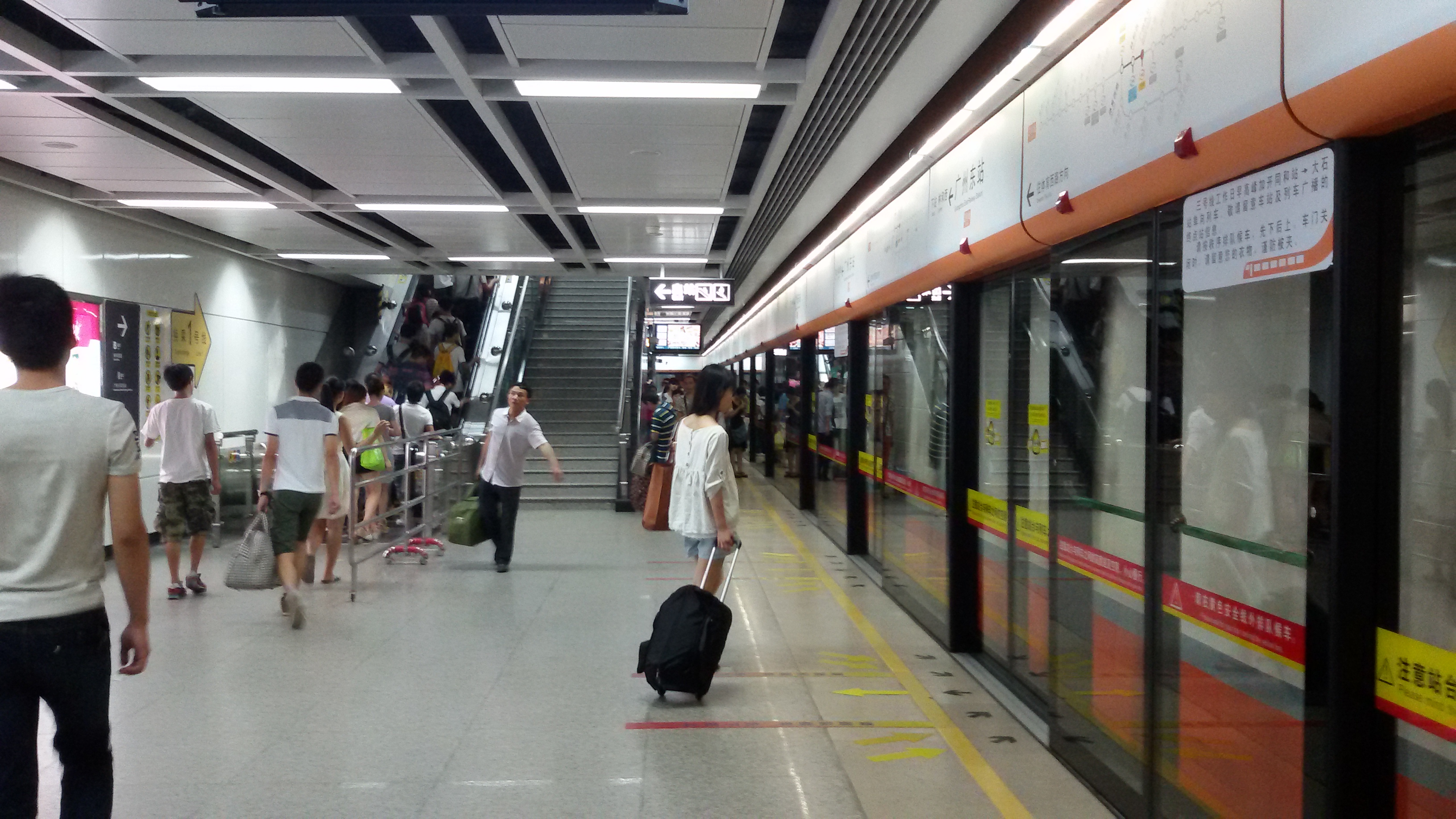|
Changshou Lu Station
Changshou Lu Station is a station on Line 1 of the Guangzhou Metro that began operations on June28, 1999. It is situated underground at the junction of Changshou Road West () and Baohua Road () in Guangzhou's Liwan District, near the Shangxiajiu Shangxiajiu Pedestrian Street (), or simply as Shangxiajiu (), is a commercial pedestrian street in Liwan District, Guangzhou, Guangdong, China. It is the first business street in Guangzhou, and it opened in September 1995. Location Located i ... shopping area. Station layout References {{coord, 23.11792, 113.24221, display=title Railway stations in China opened in 1999 Guangzhou Metro stations in Liwan District ... [...More Info...] [...Related Items...] OR: [Wikipedia] [Google] [Baidu] |
Liwan District
Liwan District is one of 11 urban districts of the prefecture-level city of Guangzhou, the capital of Guangdong Province, China. The district is split into two parts by the Pearl River: Xiguan in the northeast and Fangcun in the southwest. History Liwan District was named after "Lizhiwan", which is derived from poem of "a bay of green water and red lychees along both banks". It covers an area of and has a permanent population of about 540,000 and a permanent nonnative population of over 200,000. Liwan District is positioned in the flourishing west part of Guangzhou, on the northeast bank of the Pearl River. Liwan was originally a western suburb of Guangzhou known as Xiguan and Huadai/Huadi located in between two counties of Panyu County and Nanhai County. On 15 February 1921 Liwan along with Guangfu (present Yuexiu) formed the City of Guangzhou. Fangcun, in the western part of Liwan District, lay at the southwest of Guangzhou's downtown area and south of Pearl Ri ... [...More Info...] [...Related Items...] OR: [Wikipedia] [Google] [Baidu] |
Guangzhou
Guangzhou (, ; ; or ; ), also known as Canton () and alternatively romanized as Kwongchow or Kwangchow, is the capital and largest city of Guangdong province in southern China. Located on the Pearl River about north-northwest of Hong Kong and north of Macau, Guangzhou has a history of over 2,200 years and was a major terminus of the maritime Silk Road; it continues to serve as a major port and transportation hub as well as being one of China's three largest cities. For a long time, the only Chinese port accessible to most foreign traders, Guangzhou was captured by the British during the First Opium War. No longer enjoying a monopoly after the war, it lost trade to other ports such as Hong Kong and Shanghai, but continued to serve as a major transshipment port. Due to a high urban population and large volumes of port traffic, Guangzhou is classified as a Large-Port Megacity, the largest type of port-city in the world. Due to worldwide travel restrictions at the beg ... [...More Info...] [...Related Items...] OR: [Wikipedia] [Google] [Baidu] |
Guangdong
Guangdong (, ), alternatively romanized as Canton or Kwangtung, is a coastal province in South China on the north shore of the South China Sea. The capital of the province is Guangzhou. With a population of 126.01 million (as of 2020) across a total area of about , Guangdong is the most populous province of China and the 15th-largest by area as well as the second-most populous country subdivision in the world (after Uttar Pradesh in India). Its economy is larger than that of any other province in the nation and the fifth largest sub-national economy in the world with a GDP (nominal) of 1.95 trillion USD (12.4 trillion CNY) in 2021. The Pearl River Delta Economic Zone, a Chinese megalopolis, is a core for high technology, manufacturing and International trade, foreign trade. Located in this zone are two of the Chinese city tier system, four top Chinese cities and the List of Chinese prefecture-level cities by GDP, top two Chinese prefecture-level cities by GDP; ... [...More Info...] [...Related Items...] OR: [Wikipedia] [Google] [Baidu] |
Island Platform
An island platform (also center platform, centre platform) is a station layout arrangement where a single platform is positioned between two tracks within a railway station, tram stop or transitway interchange. Island platforms are popular on twin-track routes due to pragmatic and cost reasons. They are also useful within larger stations where local and express services for the same direction of travel can be provided from opposite sides of the same platform thereby simplifying transfers between the two tracks. An alternative arrangement is to position side platforms on either side of the tracks. The historical use of island platforms depends greatly upon the location. In the United Kingdom the use of island platforms is relatively common when the railway line is in a cutting or raised on an embankment, as this makes it easier to provide access to the platform without walking across the tracks. Advantages and tradeoffs Island platforms are necessary for any station with m ... [...More Info...] [...Related Items...] OR: [Wikipedia] [Google] [Baidu] |
Metro Station
A metro station or subway station is a station for a rapid transit system, which as a whole is usually called a "metro" or "subway". A station provides a means for passengers to purchase tickets, board trains, and evacuate the system in the case of an emergency. In the United Kingdom, they are known as underground stations, most commonly used in reference to the London Underground. Location The location of a metro station is carefully planned to provide easy access to important urban facilities such as roads, commercial centres, major buildings and other transport nodes. Most stations are located underground, with entrances/exits leading up to ground or street level. The bulk of the station is typically positioned under land reserved for public thoroughfares or parks. Placing the station underground reduces the outside area occupied by the station, allowing vehicles and pedestrians to continue using the ground-level area in a similar way as before the station's constructio ... [...More Info...] [...Related Items...] OR: [Wikipedia] [Google] [Baidu] |
Guangzhou Metro
The Guangzhou Metro () ( and ) is the rapid transit system of the city of Guangzhou in Guangdong Province of China. It is operated by the state-owned Guangzhou Metro Corporation and was the fourth metro system to be built in mainland China, after those of Beijing Subway, Beijing, Tianjin Metro, Tianjin, and Shanghai Metro, Shanghai. The earliest efforts to build an underground rapid transit system in Guangzhou date back to 1960. In the two decades that followed, the project was brought into the agenda five times but ended up abandoned each time due to financial and technical difficulties. Preparation of what would lead to today's Guangzhou Metro did not start until the 1980s, and it was not until 1993 that construction of the first line, Line 1, officially began. Line 1 opened four years later in 1997 with five stations in operation. , Guangzhou Metro has 16 lines in operation, namely: Line 1 (Guangzhou Metro), Line 1, Line 2 (Guangzhou Metro), Line 2, Line ... [...More Info...] [...Related Items...] OR: [Wikipedia] [Google] [Baidu] |
Shangxiajiu
Shangxiajiu Pedestrian Street (), or simply as Shangxiajiu (), is a commercial pedestrian street in Liwan District, Guangzhou, Guangdong, China. It is the first business street in Guangzhou, and it opened in September 1995. Location Located in the old town of Xiguan (), it stretches from Shangjiu Road () and Xiajiu Road () in the east to Dishifu Road () in the west, and traverses Baohua Road () and Wenchang Road (), about long with more than 300 shops. Shangxiajiu is composed of the unique and historical architecture based on and |
Xilang Station
Xilang station ( ), formerly Guanggang station because of nearby Guangzhou Iron and Steel's headquarters when planning, is a terminus of Line 1 of the Guangzhou Metro and Guangfo Line (FMetro Line 1). It started operations on 28 June 1997. It was situated at the underground of Huadi Avenue South in Fangcun, Liwan District Liwan District is one of 11 urban districts of the prefecture-level city of Guangzhou, the capital of Guangdong Province, China. The district is split into two parts by the Pearl River: Xiguan in the northeast and Fangcun in the southwest. .... During COVID-19 pandemic control rules from 29 May to 24 June 2021, services of Xilang station had been largely restricted, as all entrances and exits are closed, passengers can't embark or disembark at this station, and while the trains on both lines can still stop here, passengers can only transfer between both lines within the fare zone. The entrance has reopened in the afternoon of 24 June. Station layo ... [...More Info...] [...Related Items...] OR: [Wikipedia] [Google] [Baidu] |
Island Platform
An island platform (also center platform, centre platform) is a station layout arrangement where a single platform is positioned between two tracks within a railway station, tram stop or transitway interchange. Island platforms are popular on twin-track routes due to pragmatic and cost reasons. They are also useful within larger stations where local and express services for the same direction of travel can be provided from opposite sides of the same platform thereby simplifying transfers between the two tracks. An alternative arrangement is to position side platforms on either side of the tracks. The historical use of island platforms depends greatly upon the location. In the United Kingdom the use of island platforms is relatively common when the railway line is in a cutting or raised on an embankment, as this makes it easier to provide access to the platform without walking across the tracks. Advantages and tradeoffs Island platforms are necessary for any station with m ... [...More Info...] [...Related Items...] OR: [Wikipedia] [Google] [Baidu] |
Guangzhou East Railway Station (metro)
Guangzhoudong (Guangzhou East) railway station (), formerly known as Tianhe railway station () serves the city of Guangzhou, located in the city's Tianhe District. The railway, metro, and bus terminal stations is interconnected as a single station complex. There is an immigration check point within the station for Guangzhou–Kowloon through train passengers travelling to and from Hong Kong. Station Layout Rail services Rail services serving Guangzhou East railway station include: * Guangzhou–Shenzhen railway * Guangzhou–Kowloon through train * Guangzhou–Meizhou–Shantou railway Metro services An interchange station between Lines 1 and 3 of the Guangzhou Metro. It is located at the underground of China Railway station in Linhe Zhonglu (), Tianhe District Tianhe District () is one of the eleven districts of Guangzhou, the capital of Guangdong province. In Chinese, the name Tianhe literally means "a river in the sky/heavens", which is also a Chinese name f ... [...More Info...] [...Related Items...] OR: [Wikipedia] [Google] [Baidu] |
Chen Clan Academy Station
Chen Clan Academy Station is an interchange station between Line 1 and Line 8 of the Guangzhou Metro. It started operations on 28June 1999 and is situated underground Zhongshan 7th Road () in the Liwan District. The station was named after the nearby Chen Clan Academy, an academy constructed by the Chen family for their juniors' accommodation and study in Guangzhou during the Qing Dynasty The Qing dynasty ( ), officially the Great Qing,, was a Manchu-led imperial dynasty of China and the last orthodox dynasty in Chinese history. It emerged from the Later Jin dynasty founded by the Jianzhou Jurchens, a Tungusic-speak ... (16441911). Station layout References {{coord, 23.12550, 113.24659, display=title Railway stations in China opened in 1999 Guangzhou Metro stations in Liwan District ... [...More Info...] [...Related Items...] OR: [Wikipedia] [Google] [Baidu] |





_05.jpg)
